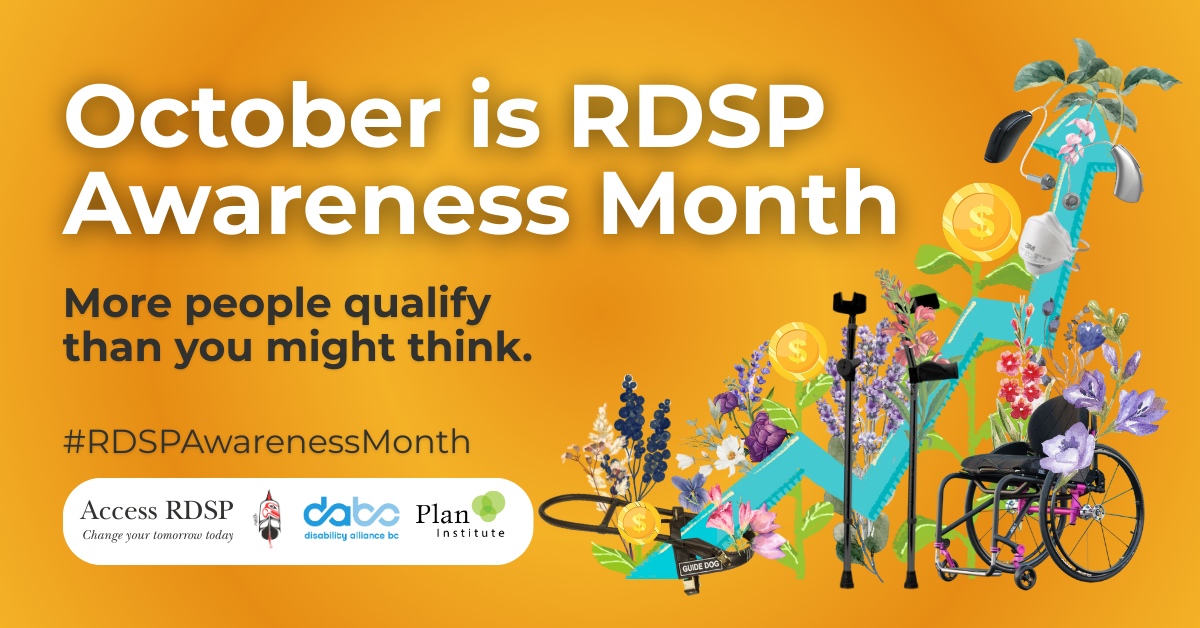A Look at the Canada Disability Benefit: Our Thoughts So Far
After years of anticipation, the Canada Disability Benefit (CDB) was finally made available in July 2025. The benefit was initially proposed as a means to lift people with disabilities out of poverty. Despite significant organizing from advocates across the country, however, there remain issues around the new legislation and its rollout. Here is a look at our thoughts on the CDB so far, and how to prepare to apply for it.
The Canada Disability Benefit remains too little for too few
The CDB offers up to $200/month for up to $2400 a year to recipients of the Disability Tax Credit (DTC) that qualify under restrictive income thresholds. Single individuals, for example, qualify for the full amount if their income falls below $23,000, with a working exemption of $10,000. The benefit gradually reduces until their income rises above $45,000. For more information on income thresholds and to find out how much you might receive, visit the federal government’s benefit estimator.
But while these thresholds were set in place to ensure that the benefit goes to those who need it most, many people who struggle financially are not able to access the payment. Because the income exemption applies only to working income, many people with rental or investment income who still struggle to meet their basic needs are left out of the benefit. As income is measured by taxes that have already been filed, those who have experienced significant income changes in 2025 must wait until after the next tax season to qualify for financial support they may need now.
Some people with disabilities who qualified are still missing their first payment.
There were also complications around initial CDB payments. The government originally miscalculated working income, which left people who qualified early for the benefit with incorrect payment amounts. Service Canada acted swiftly and has already contacted those affected. However, these technical difficulties have caused payment delays that many cannot afford. We have heard from a few clients who are still waiting for their first payment amounts to be readjusted and returned to them.
With the CDB in effect, Albertans with disabilities face more pressure to apply for the Disability Tax Credit
Depending on where you live, applying for the CDB has been especially daunting. One of the central concerns around the CDB has been around how the benefit interacts with existing provincial and territorial disability programs. Most provinces and territories announced that CDB payments would not affect income or disability assistance payments; Alberta is currently the only province to claw-back CDB payments from disability assistance (AISH) payments.
This summer, the Alberta government asked AISH recipients to provide updates on their DTC application status by September 5 or risk a reduction of their disability payments. This measure caused many people who rely on AISH to engage in a difficult, and at times, costly application process without the promise of additional money in their pockets. The Alberta government has agreed to fund medical costs related to applying, but it remains unclear how they will reimburse applicants.
What to do to prepare
While the CDB still has some kinks to work out, it is still the first benefit of its kind—a way for the federal government to provide some needed financial relief to people with disabilities facing exorbitant costs of living.
If you are looking to apply, we recommend making sure you’re as prepared as possible:
How to apply:
- Step 1: Apply for the DTC. For in-depth guides and a tool to help you speak with your medical practitioner, visit our online app, My DTC: mydtc.dabc.ca (ENG), monciph.dabc.ca (FR)
- If you’re living in Alberta, make sure you inform the government of your DTC status by filling out this questionnaire.
- Step 2: Make sure your taxes are up to date.
- Step 3: Apply for the Canada Disability Benefit online, by phone, in person, or by mail. For in-depth guides, frequently asked questions, timeline and next steps, visit canadadisabilitybenefit.ca
To keep up to date on information about the CDB, visit Plan Institute’s website: canadadisabilitybenefit.ca.
The Access RDSP Partnership can help you every step of the way
If you need assistance with any step of the application process, or need help to appeal a decision, contact our Access RDSP Partnership. Services are available within BC and across Canada.
| For BC Clients: | For Clients outside of BC: |
|---|---|
| Disability Alliance BC: Contact Access DTC at dtc@dabc.ca or 604-923-8136 | Disability Alliance Canada: or (604) 606-4160 dtc@disabilityalliancecanada.ca |
| BCANDS: 1-888-815 -5511 or bcands@bcands.bc.ca | Indigenous Disability Canada: 1-888-815 -5511 or idcnc@bcands.bc.ca |
| Plan Institute: 1-844-311-7526 or helpline@planinstitute.ca | Plan Institute: 1-844-311-7526 or helpline@planinstitute.ca |







